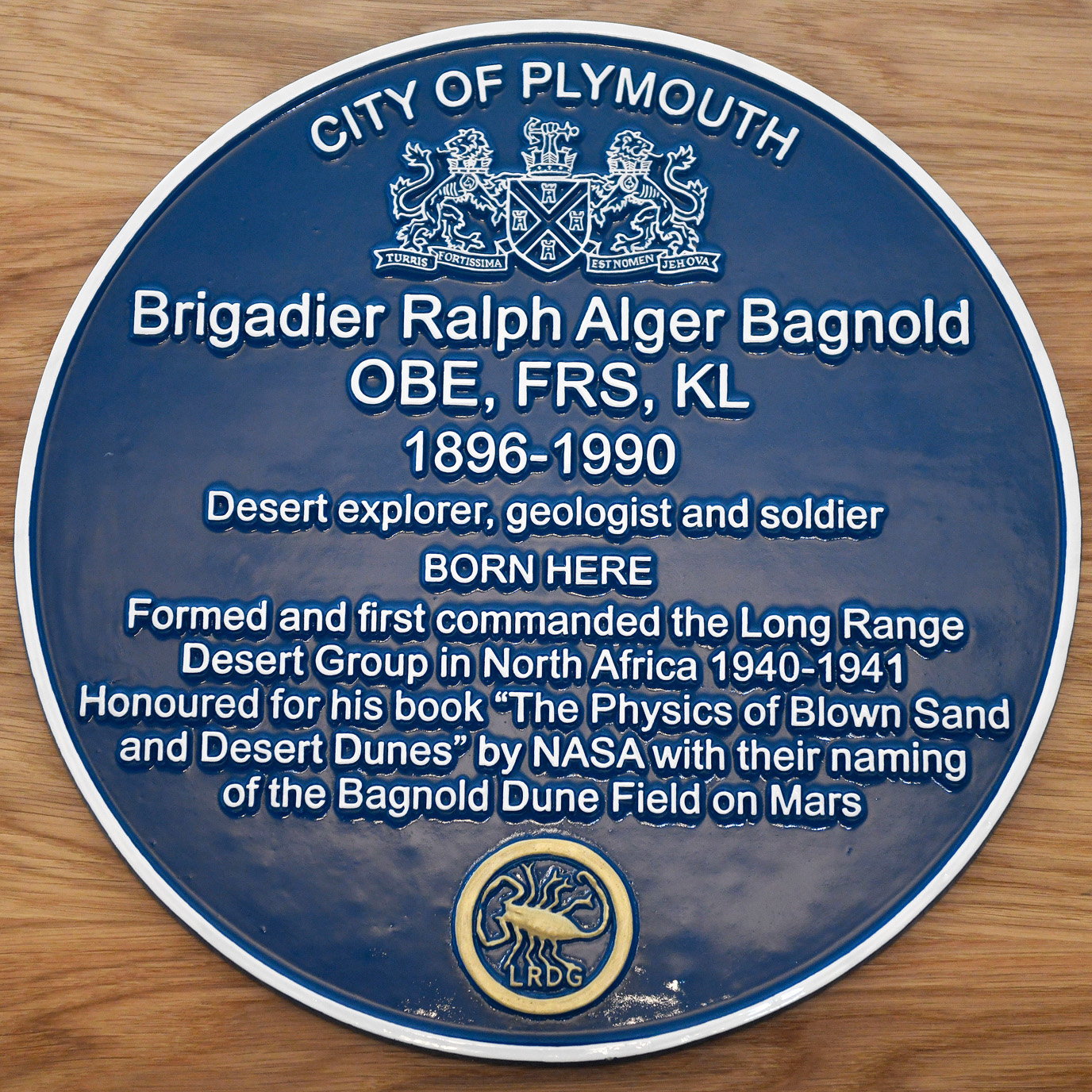Historic blue plaque honours achievements of Ralph Alger Bagnold
4 August 2025
A new blue plaque has been unveiled in Stoke today in honour of Ralph Alger Bagnold OBE FRS KL (1896-1990), a Plymouth-born man who became a scientist, explorer and soldier and whose ground breaking research into sand dunes has been recognised by NASA.
Bagnold was born on 3 April 1896 and grew up in Stoke. During the First World War he was an engineer in the British Army. He then served in the Second World War as the first commanding officer of the ‘Long Range Desert Group’. The unit carried out dangerous reconnaissance work and raids behind enemy lines in North Africa and is considered to be a forerunner of the SAS.
Bagnold also published books based on his research. In between the wars he undertook the first recorded east-to-west crossing of the Libyan Desert and pioneered the use of motor vehicles to explore the harsh terrain. His ‘Libyan Sands: Travel in a Dead World’ has been described as a ‘classic work of 20th-century Saharan exploration’.
His second book, ‘The Physics of Blown Sand and Desert Dunes’ was inspired by the many sandstorms he witnessed during his time in the desert. It remains an important reference point for scientists today and has also been used by NASA to study sand dunes and the development of sand-driving mechanisms on Mars. The Bagnold Dunes, a 22-mile-long group of sand dunes on Mars were named by NASA in his honour.

Bagnold’s plaque was unveiled at Astor Hall, Devonport Road, Stoke. Now a care home, it was once his childhood home. The plaque will now be installed on the front of the property – a lasting tribute to a legacy that bridges military service, exploration and scientific innovation.
Image credit
Portrait of Ralph Alger Bagnold by Walter Stoneman, July 1944 © National Portrait Gallery, London.